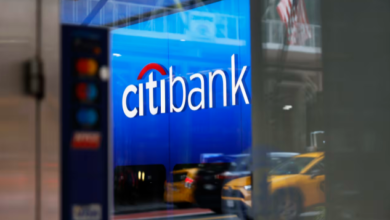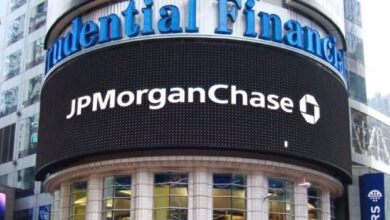Best Grocery Stores to Save Money

My strategy for saving money on groceries is straightforward: I primarily shop at low-cost and discount grocery stores with low regular prices and lots of opportunities to save more on top.
My personal rotation includes superstores like Walmart, warehouse clubs like Costco, and limited-inventory stores like Trader Joe’s. All are cheaper than mainstream supermarkets and certainly cheaper than gourmet grocery stores.
But the grocery industry is really fragmented. The United States has hundreds of regional and national grocery store chains, and it isn’t always obvious which are the easiest on your wallet. See where you should shop to get the best value.
The Best Grocery Stores to Save Money
Most of the best grocery stores are national or nearly national, meaning there’s a good chance you can find a store in your hometown. Those that aren’t quite so big are known for excellent value and service. Many even partner with money-saving apps like Upside.

Motley Fool Stock Advisor recommendations have an average return of 397%. For $79 (or just $1.52 per week), join more than 1 million members and don’t miss their upcoming stock picks. 30 day money-back guarantee. Sign Up Now
Each does at least one thing exceptionally well, and our top overall pick offers the best value in our opinion.
Best Overall: Walmart
You’ve heard of Walmart, and you’re probably not surprised to see it the best overall. No matter what’s on your shopping list, America’s biggest superstore chain makes good on its promise of everyday low prices.
Walmart began life as a department store but now has a grocery selection to rival the biggest supermarket chains. With produce, meat, and seafood sections that have steadily grown over the years, you can knock out your entire grocery list at Wally World with no problem — and much of your non-grocery list too, probably.
Walmart serves every state in the country — nearly 5,000 total stores in the United States. But a few hundred older stores don’t sell groceries, so use Walmart’s store finder to confirm they do before heading out.
Additional Walmart selling points include:
- Save even more with low-priced store brands (Great Value and Equate) spanning hundreds of grocery items, dry goods, and over-the-counter medications.
- In-store services include conveniences like pharmacies, banks and ATMs, and money-transfer services (such as Western Union).
- There are ample self-checkout kiosks for busy shoppers.
- The Walmart+ rewards program includes member gas savings at participating gas stations, a free subscription to Paramount+, free shipping and store delivery on all online orders, and a six-month free trial of Spotify Premium, all for less than $100.
Best for Customer Service: Piggly Wiggly
Piggly Wiggly invented the modern grocery store. The innovation: Allowing shoppers to move about the store and choose their own goods rather than waiting upfront while clerks raced to fill their orders.
That was back in 1916. Piggly Wiggly is still going strong today, with about 600 stores across the South and Midwest.
Ironically for a store that made fill-order clerks obsolete, Piggly Wiggly now stands out for above-and-beyond customer service. If you’re the sort of shopper who likes chatting up the butcher or asking the stockperson for their honest opinion about this or that product, Piggly Wiggly is the best discount grocery store for you.
Additional features:
- Piggly Wiggly is an Upside partner — earn cash back through the app whenever you shop.
- Save on gas with the Piggly Wiggly Rewards Card, which earns points to redeem at participating gas stations.
Best for Shelf-Stable Shopping: Dollar General
Dollar General is the United States’ biggest dollar store chain. Though it doesn’t live up to the name anymore — blame inflation — Dollar General has legitimately low prices on everyday goods, including groceries. It’s particularly renowned for its selection of shelf-stable cereals, canned foods, and frozen foods.
The upshot: Most Dollar General stores don’t have produce sections or sell any fresh food to speak of, though the company is making a concerted effort to offer healthier options, including bougie brands like Annie’s and Kashi.
Dollar General has more than 18,000 stores, with at least one in every state but Alaska, Hawaii, and Montana. It’s a fixture in rural towns too small to support a Walmart and in urban food deserts, where the only other grocery options are convenience stores.
Additional features:
- Shop dollar deals for merchandise that actually does cost $1 — often clearance sales.
- Look for the Better for You tags to find healthier products.
- Shop multiple store brands, including Clover Valley and Heartland Farms.
Best for Bulk Buying: Costco
As the biggest warehouse store chain in the United States, Costco is the best place to buy groceries in bulk for less.
Costco has an extensive selection of nonperishable foods and home goods like toilet paper, cleaning products, and pet food. It also has an impressive array of fresh food — meat, produce, bread, cheese — and freezer-friendly prepared foods. If you have multiple mouths to feed and can spend enough to earn back the $60 annual membership fee, there’s no better place to fill your pantry and fridge.
Costco’s biggest downsides include poor selection — there’s often only one or two brands of each product — and relatively few locations. If you don’t live in a reasonably sized city, you might not have a Costco within driving distance.
Additional features:
- Apply for the Costco Anywhere Visa Signature Card and earn 2% cash back on Costco purchases in-store and online and 4% back on eligible gas station purchases.
- Try before you buy at in-store sampling stations.
- Look for in-store services like Costco Pharmacy, Costco Optical, and the famed Costco food court (featuring $1.50 hot dog meals).
Best Store Brand Variety: Save A Lot
Save A Lot is a neighborhood discount grocery store with about 1,000 locations in 32 states, mostly in the eastern half of the United States. The average store size is only about 15,000 square feet — compared with over 140,000 square feet for the typical Costco location — much more manageable for shoppers who like to get in, get what they need, and get on their way.
As an Upside partner with an excellent mobile coupon app, Save A Lot has embraced the money-saving power of technology.
But its real selling point is the sheer variety of its store brands. It has literally dozens of unique labels focusing on specific products: Cahokia Farms (beef patties), Coburn Farms (dairy), World’s Fair (frozen novelties), Portside (seafood), and Oliver & Scout (pet food), to name a few. It has a lower-cost generic alternative for just about everything you could buy.
Additional features:
- Order online through your desktop or mobile app.
- Join Red Dot Rewards for free to get personalized offers based on your shopping history.
- Shop a wide variety of fresh foods, including meats and produce.
Best Store Brand Quality: Trader Joe’s
If you only buy store brands if they’re better than the name brand, try Trader Joe’s instead of Save A Lot.
Trader Joe’s private-label products are renowned for quality and wholesomeness because they’re often made by upscale food companies that are themselves renowned for quality and wholesomeness. That includes Annie’s, Naked Juice, Stacy’s, and Stonyfield Farm.
Because Trader Joe’s has more than 500 locations across the United States — and is a subsidiary of the much larger company that also owns Aldi — you’ll likely pay less for its high-quality private-label products than you would for the name-brand equivalents at mainstream supermarkets.
Additional features:
Best for Convenience: Aldi
Germany-based Aldi is the parent company of Trader Joe’s, and though the two chains began life as separate enterprises separated by thousands of miles, they have a lot in common. Like Trader Joe’s, Aldi stores tend to be small, have lots of variety but limited selection within product categories, and price their products to sell.
More so even than Trader Joe’s, Aldi prides itself on convenience. The typical store is about 16,000 square feet, and Aldi has a penchant for neighborhood locations with too little traffic for bigger supermarkets. In working-class urban neighborhoods, it’s often the only grocery game in town other than convenience stores, which can’t compete on price or selection.
Additional features:
- The company has more than 2,000 stores in about 40 states.
- Find a broad selection of Aldi-created easy-prep meal kits.
- Aldi Finds offer impressive discounts on grocery and non-grocery purchases, such as home decor.
Best Pharmacy: Schnucks
With between 100 and 150 stores in the Midwest, Schnucks is the smallest discount grocery store chain on this list. But as an Upside partner, it’s an excellent place to save — arguably offering the best bang for your grocery buck in eastern Missouri, downstate Illinois and Indiana, and southern Wisconsin.
Schnucks stands out for another reason too: Its in-store CVS Pharmacy locations consistently earn high marks from shoppers, who appreciate the fast service and low prices that come with a national pharmacy brand.
Additional features:
- Most locations have in-store services like a bank and ATM and carpet cleaner rental.
- Order online (desktop or app) for store-to-home delivery.
- Load digital coupons to your free Schnucks loyalty account to save in-store or online.
Methodology: How We Select the Best Grocery Stores to Save Money
We use several factors to evaluate discount grocery stores and choose the best options for our readers.
The 2022 Dunnhumby Retailer Preference Index’s price data guided our selections, but we added these additional methodological considerations. Most fall into two broad categories: value and quality.
Overall Price Point & Promotions
We break down this factor into two subfactors: overall price point and discounts and promotions.
Think of the overall price point as the baseline price range. The lower the store’s regular prices, the better it scores on this point. We chose Walmart as the best grocery store to save money in large part because it delivers on its promise of everyday low prices on name-brand and store-brand goods.
Promotions are important too. Nearly all grocery stores slash prices on products they need to sell quickly, but some offer broader, deeper, more frequent, and plain-old better discounts than others. Costco is famous for its clearance discounts, for example.
Product Selection & Variety
Discount grocery stores aren’t known for variety. That’s part of how they keep prices down. You won’t find many different brands of the same product at Costco, Trader Joe’s, or Aldi, for example.
Those stores have enough redeeming qualities to make the cut, but we do look for stores that have relatively good selection compared to other discounters. Walmart and Save A Lot score particularly high on this metric.
Product Quality
Quality is subjective. Many shoppers assume store brands are inferior to name brands, but taste-tester after taste-tester says that’s not always the case.
That said, shopper consensus is clear that some discount grocery stores sell higher-quality products than others. Trader Joe’s really shines on this point. Its store brand enjoys a near-cultlike following.
Rewards Programs
Most grocery stores have free loyalty programs that entitle you to special discounts and deals unavailable to the general public. Some also participate in app-based rewards programs like Upside, where you can claim even better deals if you download and use the app.
All else being equal, we prefer stores that let you stack rewards earned through multiple channels — for example, using loyalty programs, rewards apps, and clipped coupons on the same product. Schnucks, Save A Lot, and Piggly Wiggly do particularly well on this metric.
Geographic Distribution
The supermarket industry is fragmented. Some of the best discount grocery stores serve just one metropolitan area or have only a handful of outlets. I’d love to include my go-to discounter here — its meat deals are unreal — but it only has one location. But if you’re looking for under-the-radar discount grocery stores in your area, search BuySalvageFood.com.
So we’ve chosen stores with a minimum of 100 active locations, preferably in several states. And we prefer national or near-national outlets like Walmart, Costco, and Aldi.
Convenience & Overall Quality of the Shopping Experience
Convenience and shopping experience quality are subjective. Some people like meandering through confusing store layouts, while others prefer to grab and go. Some want to be able to flag down employees at a moment’s notice, while others make a beeline for the self-checkout kiosk.
That said, some grocery stores are undeniably easier and more pleasant to shop in. Smaller-format stores like Trader Joe’s and Aldi tend to do better on this point than superstores like Walmart and Costco.
Saving Money at Grocery Stores FAQS
There’s more to saving money on groceries than where you shop. The answers to these frequently asked questions can help you with the whats and hows too.
Are Low-Cost and Discount Grocery Stores Always Cheaper?
Not necessarily. Every grocery store runs sales, and many are known for offering solid value on specific goods or categories.
Store pricing and marketing can change over time too. Since Amazon bought it in 2017, Whole Foods Market has shed its snooty reputation and now competes with mainstream grocery stores on price, though it doesn’t (yet) make the low-cost or discount grocery store cut.
That said, low-cost and discount grocery stores generally have lower prices than higher-end stores.
What’s the Best Way to Save on Groceries?
There’s no “one weird trick” to save money on groceries every time. Instead, stack as many of these strategies as possible:
- Use a rewards app like Upside and shop at partner grocery stores
- Shop at stores with a reputation for low pricing
- Join stores’ shopper loyalty programs
- Clip electronic or paper coupons and use them in-store
- Use a cash-back credit card or other rewards card when you shop
- Take advantage of limited-time sales and promotions, and be flexible about what you buy and when so you get as many discounts as possible
Do Low-Cost and Discount Grocery Stores Accept Coupons?
It depends on the store. If you don’t see any indication otherwise, you can at least try to use coupons. It doesn’t hurt to call ahead and ask, though.
How Do You Find Low-Cost and Discount Grocery Stores?
“Discount grocery store” isn’t an official certification — there’s no master list of discount grocery stores anywhere.
Every chain on this list qualifies as a discount grocery store. For alternatives, search online for “discount grocery stores in [your city]” or “low-cost grocery stores in [your city] or ask people in your social or professional networks for recommendations.
How to Choose the Best Grocery Store to Save Money
Choosing a grocery store isn’t as high-stakes as, say, choosing a house or job. There’s also no rule against choosing more than one. I shop at three or four different grocery stores (including Costco) in the course of a typical month, and I doubt I’m unusual in that regard.
That said, whether you’re moving to a new state or just trying out a new routine, you’ll save yourself time and stress if you do some research before setting foot in a random grocery store. Consider:
- Location and convenience — time is money, and there’s no point in driving 45 minutes each way to save a few bucks unless you have no other choice
- Price point — the lower the undiscounted prices, the better
- Promotions and sales — the more sales the store runs, the better
- Product quality — it’s sometimes worth paying a bit more for better products
- Product variety — not all discount grocery stores are known for variety, but it’s nice when you can get it
- Loyalty programs and rewards — the more benefits you get for being a member, the better
And remember: You’ll always save more when you download the Upside app and shop with Upside grocery partners.
Source link





